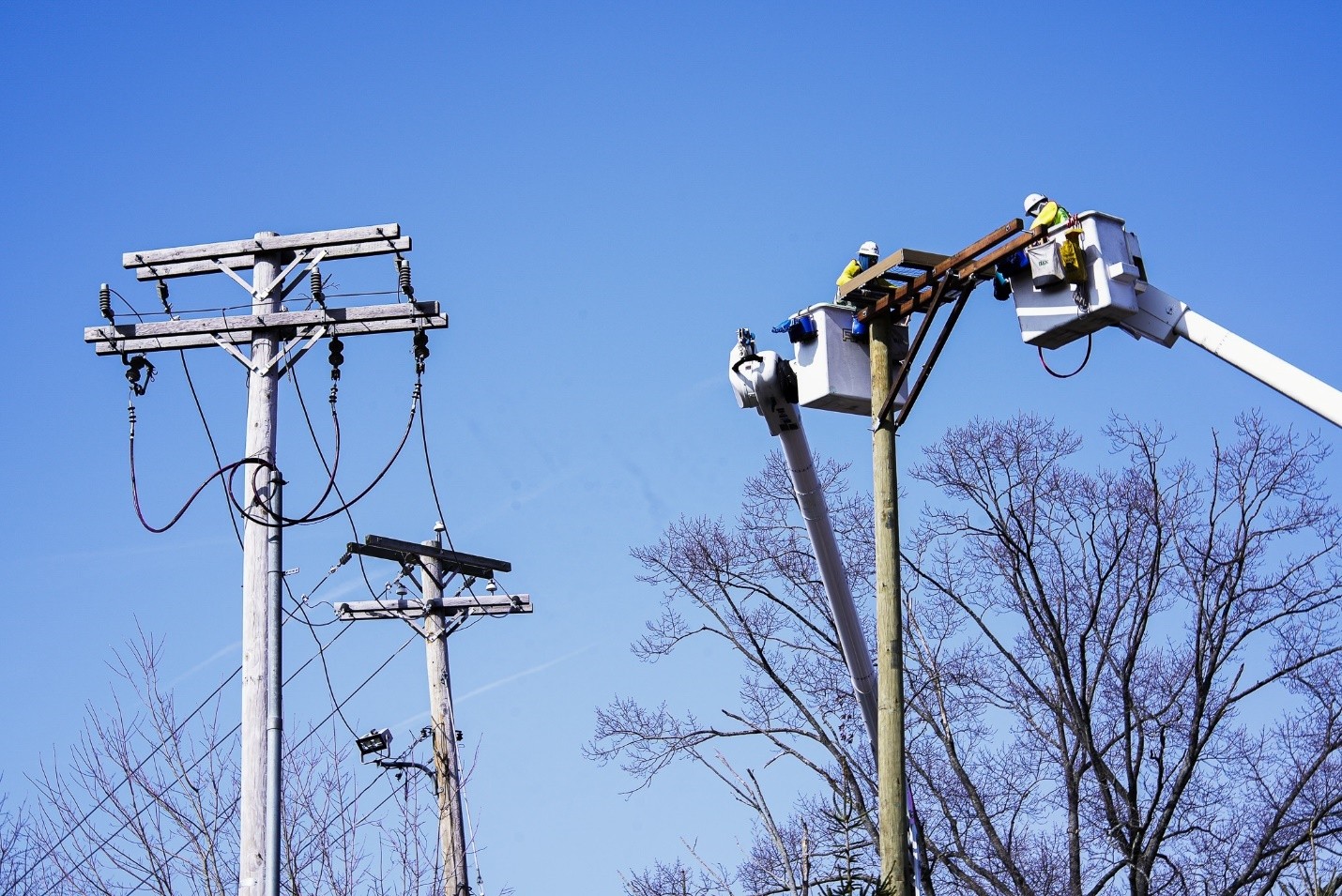UI Installs Two New Osprey Platforms to Protect Wildlife, Prevent Electric Outages
New osprey platforms in Fairfield and Stratford continue UI’s voluntary practice of installing 1-5 platforms per year near utility poles where ospreys have built a nest
Video of the most recent Fairfield platform installation is linked HERE

Members of UI’s line crew install an osprey platform near electric infrastructure near Ludlowe Access Road in Fairfield, Conn.
ORANGE, Conn. — April 24, 2025 — Today, United Illuminating (UI), a subsidiary of Avangrid, Inc., announced its recently completed installation of two new platforms on which ospreys can build their nests this season. The new platforms, which were installed in Fairfield on March 12-13 and in Stratford on April 8, are located adjacent to electric infrastructure on which ospreys had previously built a nest. The new osprey platforms provide an alternative for the location of ospreys’ nests that is safer for the birds and their young while preventing customer outages that can occur when nesting material impacts energized electric infrastructure.
“Protecting wildlife and other natural resources in and around our communities is essential for any business, especially for utility companies like UI because so much of our infrastructure is built into the natural world,” said Frank Reynolds, President and CEO of UI. “That’s why we have installed dozens of osprey platforms over the years, as they are an excellent tool to protect nesting ospreys from fires or other hazards while preventing customer outages in our coastal communities. Our team goes above and beyond to work with nature, not against it, and these two new osprey platforms demonstrate our continued commitment to these critical efforts.”
The two new platforms in Stratford and Fairfield join dozens of similar platforms across UI’s service area, as UI typically installs between one and five osprey platforms annually and has done so in at least 12 of its 17 municipalities, including all coastal communities as well as Derby, Shelton, Hamden, and others.
When an osprey begins to build a nest on electric infrastructure (e.g., utility poles, electric transformers), UI line workers and other members of the Electric Operations team typically discover it from a routine inspection or from an outage caused by the twigs, sticks, and leaves that comprise nesting material, as happened with the nest in Fairfield. Nesting activity can also be reported to UI by residents, property owners, municipal officials, the Connecticut Audubon Society, and other interested stakeholders.
Following an internal or external report, UI’s Environmental & Permitting (E&P) department visits the nesting site and evaluates several factors: the stage of the nesting activity (inactive nest that the ospreys are in the process of building, established inactive nest that has been used in previous years, active nest in which ospreys are brooding their eggs, or active nest that is housing fledglings); whether there is space to install a platform within UI’s right-of-way (free from overhead lines); whether UI has or can obtain permission from the property-owner to install a platform; time of year in the nesting season; and location.
UI’s E&P department works with a variety of external stakeholders in making these evaluations to chart a best path forward. UI will often contact the Audubon Society to inform them of any planned activities related to the nest. If a nest is active (i.e., is occupied by eggs or fledglings), UI discusses any plans or proposals with the Connecticut Department of Energy and Environmental Protection (DEEP) Wildlife Division and does not commence without DEEP approval. Each nesting situation is managed on a case-by-case basis to protect the ospreys and to prevent customer outages.
“At UI, progress and preservation can go hand in hand,” said Correne Auer, Manager of Environmental & Permitting at UI. “By working with internal teams, our customers, and other stakeholders, such as at the Connecticut Audubon Society and DEEP, we can achieve two essential goals: reducing outages, which delivers on our commitment to provide safe, reliable power; and protecting wildlife, which is core to our social and environmental responsibilities. I am proud to be part of a team that prioritizes these objectives, and I look forward to continuing this important work.”
For more information on UI’s sustainability and conservation efforts, please visit: In the Environment - UI.
